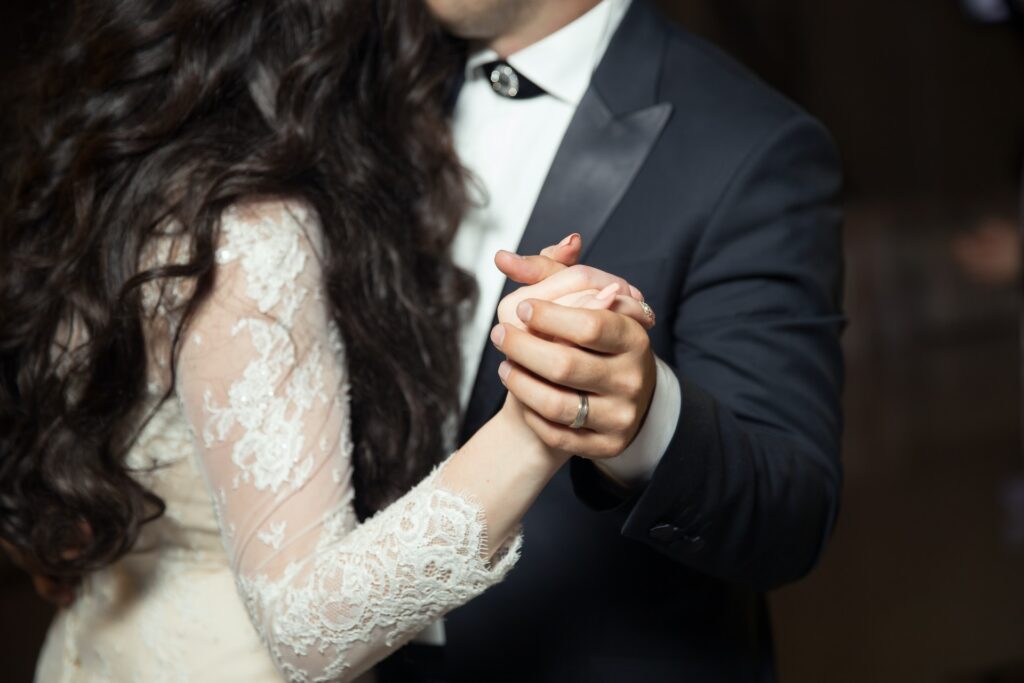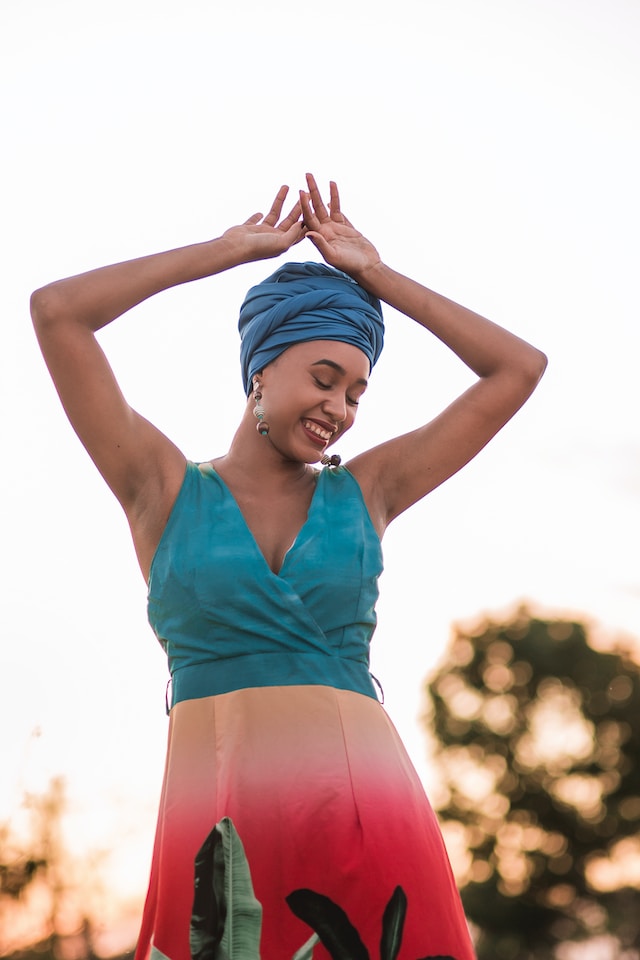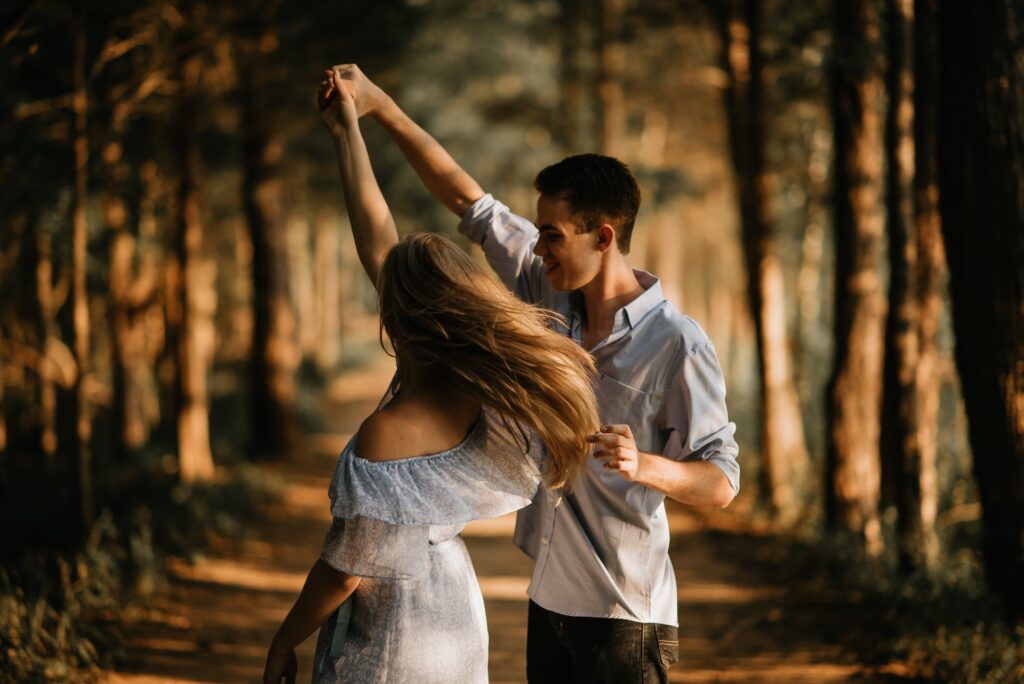Slow dancing, a timeless and captivating dance form, has enchanted couples on dance floors for generations. With its graceful movements and close physical connection, slow dancing evokes a sense of romance and intimacy. It is an art that transcends cultures and eras, serving as a beautiful expression of love, passion, and connection between individuals.
Definition And Significance Of How To Slow Dance
Slow dancing can be defined as a style of partnered dance characterized by smooth movements, gentle sways, and close proximity between partners. Unlike faster-paced dances such as the jitterbug or salsa, slow dancing allows couples to sync their steps with the music’s rhythm in a more relaxed manner. This dance style offers an opportunity for couples to share tender moments while gliding across the floor together.
The significance of slow dancing lies in its ability to create an intimate bond between partners. By embracing each other closely during the dance, couples are able to connect on both a physical and emotional level.
The gentle sways and subtle movements synchronize their breathing patterns and heartbeats, fostering a deep sense of harmony that strengthens their relationship. Slow dancing allows couples to escape from the chaos of everyday life and enter a world where they can communicate without words – an enchanted realm where love takes center stage.
Brief History and Cultural Context of Slow Dancing
Slow dancing has roots that trace back centuries across various cultures around the world. In European ballrooms during the 17th-century Renaissance era, dances like the waltz became immensely popular for their elegant yet intimate nature.
This set the foundation for what would later become modern slow dancing. Throughout history, different cultures have embraced slow-dance-like traditions in their own unique ways.
For instance, Latin American countries have given birth to sensual dances like tango or bolero that involve intricate footwork combined with close partner embrace. Similarly, in the United States, the blues and jazz movements of the early 20th century birthed dances like the slow drag and the Lindy Hop, which incorporated slower tempos and smooth movements.
In contemporary society, slow dancing continues to hold a special place in various social settings. From weddings to proms to romantic evenings at home, couples seek solace on the dance floor as they sway to melodic tunes.
Slow dancing has become a universal language of love, transcending cultural boundaries while allowing individuals to express their deepest emotions through movement. So now that we have established what slow dancing is and its significance in our lives, let us move forward and explore how one can prepare for this enchanting art form.
Preparing for the Slow Dance
Choosing the Right Partner
Finding the perfect partner to slow dance with can greatly enhance your experience on the dance floor. Look for someone who shares your enthusiasm for dancing and is willing to practice and explore different movements together.
Compatibility in height, rhythm, and dancing style can also play a significant role in creating a seamless connection. Slow dancing is about intimacy and trust, so choose someone who makes you feel comfortable and at ease.
Selecting Appropriate Attire for the Occasion
Your choice of attire can set the tone for the entire evening of slow dancing. For formal events like weddings or elegant parties, opt for classic formal wear such as suits or tuxedos for men and beautiful dresses or gowns for women.
If you’re attending a more casual gathering, dress smartly but comfortably with semi-formal attire or dressy-casual outfits that allow you to move freely on the dance floor. Consider the color scheme of your clothing as well; coordinating outfits with your partner adds an extra touch of elegance to your dance performance.
Additionally, pay attention to footwear – ladies might want to choose shoes with moderate heels that are comfortable enough to dance in without causing discomfort throughout the night. Gentlemen should opt for polished shoes that provide adequate support as they glide gracefully across the floor.
Finding a Suitable Dance Floor and Setting
When it comes to slow dancing, ambiance matters just as much as technique. Seek out venues with spacious dance floors that offer enough room for both partners to move comfortably without bumping into others around them.
The lighting should be dim enough to create an intimate atmosphere but not so dark that it hampers visibility. Consider other factors such as music selection – find a venue that plays slow-paced songs appropriate for slow dancing.
A live band or DJ spinning romantic tunes can add a captivating touch to the overall experience. If you’re planning a private slow dance at home, rearrange furniture to create an open space where you and your partner can sway together uninterrupted.
Take some time before the dance begins to set the mood with candles, soft lighting, or even rose petals scattered on the floor. The right setting can transport you and your partner into a world of pure romance and make your slow dance truly unforgettable.
Mastering The Basics Of Slow Dancing
Embracing your partner: hand placement, arm positioning, and body contact
When it comes to slow dancing, the first step is learning how to embrace your partner. The way you hold each other sets the tone for the entire dance. As the lead, place your right hand on your partner’s left shoulder blade or upper back, while extending your left hand to gently clasp their right hand.
Ladies, rest your left hand gracefully on your partner’s right shoulder or arm. Feel free to experiment with different variations that suit both of you.
Ensuring a comfortable and natural connection is essential in slow dancing. Avoid gripping too tightly or holding each other too loosely.
Strike a balance that allows for easy movement and communication between partners. Maintaining a respectful and considerate distance is crucial—stay close enough to maintain connection but allow room for proper execution of dance steps.
Understanding rhythm and timing in slow dancing
To truly excel at slow dancing, you must develop an innate understanding of rhythm and timing. Slow dances typically follow a 4/4 time signature or a 3/4 waltz rhythm.
Pay close attention to the music’s beat as it guides your movements. A helpful tip is counting beats internally—1—2—3—4 for 4/4 time signature or 1-2-3 for waltz rhythm—to ensure synchronization with the music.
With practice, this counting will become second nature and allow you to effortlessly flow with each step. Listening attentively to the music also helps anticipate changes in tempo or breaks within the song which can be incorporated into your dance routine spontaneously.
Maintaining proper posture and balance while moving gracefully
Good posture is fundamental in any form of dance – slow dancing being no exception. Stand tall with your head held high, shoulders relaxed, and spine straight.
This allows for better body alignment, making it easier to execute smooth and elegant movements. Proper balance is vital in slow dancing.
Distribute your weight evenly between both feet, keeping a slight bend in your knees to maintain flexibility and agility. Be mindful of your partner’s movements and adjust accordingly to maintain connection while moving gracefully across the dance floor.
To enhance the beauty of your dance, imagine an invisible string pulling you upwards from the top of your head. This visualization helps lengthen your body, creating an elongated silhouette that exudes elegance and poise.
Mastering the basics sets a solid foundation for becoming a captivating slow dancer. By embracing your partner with finesse, understanding rhythm and timing, as well as maintaining excellent posture and balance, you’ll be well on your way to creating mesmerizing moments on the dance floor.
Exploring Different Styles Of Slow Dancing
Traditional Ballroom Style: Waltz, Foxtrot, or Tango-Inspired Movements
When it comes to slow dancing, traditional ballroom styles like the waltz, foxtrot, and tango offer an elegant and refined experience. Each style has its own distinct steps and patterns that contribute to the overall gracefulness of the dance. In the waltz, dancers follow a smooth 3/4 time signature and execute sweeping movements across the dance floor.
The foxtrot incorporates gliding steps with gentle rises and falls in tempo, while the tango demands sharp staccato movements with passionate flair. To truly excel in these traditional ballroom styles, mastering specific steps is crucial.
For instance, in the waltz, you’ll need to become familiar with steps such as the box step or natural turn. These patterns help create a seamless flow between partners as they navigate around the dance floor.
Similarly, in the foxtrot, you’ll want to practice feather steps and promenade walks for a captivating performance. Elegant footwork techniques play a pivotal role in enhancing your overall dancing experience in these styles.
Maintaining lightness on your feet by rolling through each step will ensure smooth transitions between movements. Additionally, focusing on proper weight distribution between partners grants stability while executing turns and spins.
Incorporating Turns, Spins, and Dips with Precision
Incorporating turns, spins, and dips with precision adds an element of excitement to slow dancing within traditional ballroom styles. When executing turns together with your partner during a dance sequence such as a pivot turn or natural spin turn in waltz or foxtrot respectively—communication becomes key.
Clear signals from one partner guide the other through each rotation smoothly. As for dips—a dramatic move commonly found in the tango—timing and technique are paramount.
Proper coordination between partners is crucial to ensure a seamless descent into the dip, gracefully rising back up without any awkwardness. Safety and comfort are always the top priorities when attempting more challenging moves.
Contemporary Slow Dance Styles: Blues, Jazz, or Pop-Inspired Movements
While traditional ballroom styles exude elegance, contemporary slow dance styles offer more freedom for personal expression. Think blues, jazz, or pop-inspired movements that allow you to let loose and showcase your individuality on the dance floor.
These styles embrace syncopated rhythms and improvisation techniques to create a unique dance experience. Blues-inspired slow dancing encourages fluid movements grounded in emotion and connection with your partner.
The beauty of this style lies in its simplicity—allowing your body to sway naturally to the music while conveying deep feelings through subtle shifts in weight distribution and body language. On the other hand, jazz-inspired slow dances invite creativity through improvisation.
Syncopated rhythms challenge dancers to explore intricate footwork variations that sync perfectly with the music’s energetic beats. The fusion of different dance elements coupled with sudden bursts of dynamic movement creates an engaging performance that captures both attention and imagination.
Regardless of which contemporary style you choose, utilizing body language becomes instrumental in establishing an emotional connection with your partner. Through gentle touches, eye contact, or mirroring each other’s movements, you can build a profound sense of understanding and intimacy on the dance floor.
Whether you opt for traditional ballroom or contemporary styles of slow dancing during an event or social gathering—it’s all about having fun while expressing yourself through movement. With practice and dedication, you’ll soon find yourself gliding effortlessly across the floor in perfect harmony with your partner.
Enhancing Your Slow Dance Experience
Effective Communication through Non-Verbal Cues during the Dance
When it comes to slow dancing, verbal communication takes a backseat as non-verbal cues become the language that connects you and your partner. These cues are essential for leading and following, ensuring a seamless dance experience.
One of the key elements is maintaining a firm yet gentle connection with your partner through your hands and arms. This connection allows you to communicate subtle movements, turns, and changes in direction.
To effectively communicate with non-verbal cues, pay attention to your partner’s body language. Use slight pressure or tension changes in your handholds to guide them effortlessly across the dance floor.
Remember that communication goes both ways – as a follower, remain receptive to your partner’s lead by being attentive to their movements and responding accordingly. By establishing clear non-verbal communication, you can create an elegant synergy on the dance floor.
Creating a Comfortable Atmosphere by Maintaining Eye Contact with Your Partner
Eye contact plays a crucial role in establishing trust and comfort between dance partners during a slow dance. Looking into each other’s eyes not only enhances the emotional connection but also helps maintain synchronization throughout the dance.
By maintaining eye contact, you can anticipate each other’s movements and adjust accordingly, resulting in graceful transitions from one step to another. While eye contact is important, it’s equally vital to strike a balance between gazing into each other’s eyes and appreciating the overall ambiance of the dance floor.
Avoid staring too intensely or exclusively at your partner; instead, let your gaze wander gently around their face while occasionally locking eyes with them. This creates an intimate atmosphere without overwhelming either party.
Adding Subtle Variations to Make Your Dance Unique
To make your slow dance truly memorable, consider adding subtle variations that showcase your individuality and style. While the basic steps and patterns provide a foundation, injecting personal touches can elevate the overall experience.
These variations can be introduced through nuanced footwork, gentle embellishments in arm movements, or even small surprises like unexpected twirls or dips. However, it’s important to keep in mind that subtlety is key when incorporating these variations.
They should complement the overall flow of the dance rather than disrupt it. Take cues from the music’s rhythm and lyrics to guide your creative choices.
By infusing your dance with these unique touches, you and your partner will create a magical moment that sets your slow dance apart from others. Enhancing your slow dance experience involves effective non-verbal communication, maintaining eye contact with your partner, and adding subtle yet personal variations.
By mastering non-verbal cues, you can lead or follow gracefully on the dance floor. Maintaining eye contact establishes trust while allowing you to anticipate each other’s moves effortlessly.
Incorporating subtle variations adds a touch of individuality to make your slow dance truly exceptional. So embrace these techniques and let yourself be swept away in the beauty of slow dancing!
Common Challenges in Learning How To Slow Dance
Overcoming Nervousness or Shyness on the Dance Floor
Feeling nervous or shy on the dance floor is completely normal, especially if you’re new to slow dancing. But fear not! There are ways to overcome these jitters and embrace the joy of dancing with confidence. First and foremost, remind yourself that everyone starts somewhere.
Even experienced dancers were once beginners too! Take a deep breath, relax your body, and mentally prepare yourself to have fun. The purpose of slow dancing is not just about executing perfect moves but also about connecting with your partner emotionally.
Another helpful tip is to practice before hitting the dance floor. Familiarize yourself with basic steps and movements by watching online tutorials or attending dance classes. The more comfortable you become with the basic techniques, the more relaxed you will feel during an actual dance.
Don’t be afraid to share your nervousness with your partner. Chances are they may be feeling a bit apprehensive as well. Communicating openly can ease tension between partners and create a supportive atmosphere where both individuals can enjoy the dance together.
Dealing with Mismatched Heights or Skill Levels Between Partners
Finding yourself in a situation where you and your partner have different heights or skill levels can sometimes be challenging on the dance floor. However, slow dancing is not just about technical perfection but also about connecting and having a good time together. If there’s a significant height difference between you and your partner, it’s essential to find comfortable positions that work for both of you.
Taller partners can bend their knees slightly while shorter partners can stand on their toes or wear shoes with heels if desired. When it comes to skill levels, patience is key. If one partner has more experience than the other, it’s important to maintain a positive and encouraging attitude.
The more experienced partner can take the lead and guide their less experienced counterpart through the dance. Slow dancing is about creating a beautiful moment together, regardless of skill levels.
Adjusting Yourself
Adjusting to various situations on the dance floor is an essential skill to develop as a slow dancer. Sometimes, unexpected circumstances can arise, such as crowded spaces or different tempos of music. Here are some tips to help you navigate these situations with ease:
1. Adaptability is key: Be flexible and adaptable in your movements. If the dance floor is crowded, simplify your steps and focus on maintaining a connection with your partner rather than intricate routines.
2. Modify movements: Depending on the tempo of the music, adjust your steps accordingly. Slower songs may call for smoother, elongated movements while faster songs may require quicker footwork.
3. Communication: If you encounter any difficulties or need to make adjustments during the dance, don’t hesitate to communicate with your partner through non-verbal cues or whispers.
This ensures that both partners are on the same page and can enjoy a seamless dancing experience. Keep in mind, dancing should be enjoyable for both partners involved; it’s not about perfection but rather shared joy and connection.
Conclusion: You Can Learn How To Slow Dance – Don’t Give Up!
Slow dancing is an art that allows individuals to express themselves emotionally while forming connections with their partners through movement and rhythm. By overcoming nervousness or shyness, embracing differences in heights or skill levels, and adjusting gracefully to unforeseen circumstances on the dance floor, one can fully experience the beauty of slow dancing.
No matter your level of expertise or past experiences with dancing, everyone has something unique to offer when it comes to slow dancing. So let go of any self-doubt you may have and allow yourself to be swept away by the enchantment of this elegant form of expression.
With practice, patience, and a willingness to step out of your comfort zone, slow dancing can become not only an enjoyable activity but also a cherished way to connect with others. So put on your dancing shoes, embrace the music’s rhythm, and experience the magic of slow dancing for yourself.








